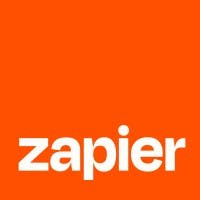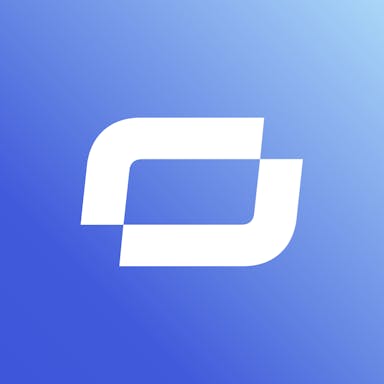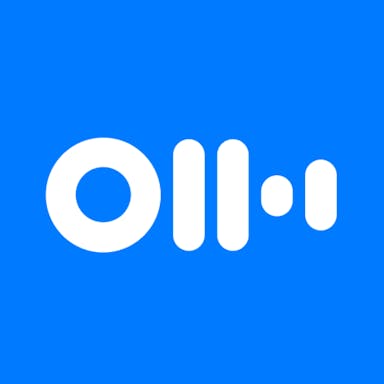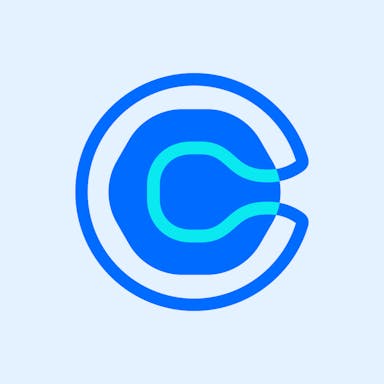Thesis
Remote work, which became widespread during the COVID-19 pandemic, is here to stay. 16% of companies were fully remote as of June 2023. 12.7% of full-time employees worked from home and 28.2% were hybrid workers (splitting time between in-office and remotely from home). Narrowing it to workers who have jobs that can be done from home (as opposed to all jobs, some of which can't), fully 35% worked from home exclusively as of 2023 — up from just 7% before the COVID-19 pandemic, although that figure has declined since the peaks seen at the height of the pandemic.
One consequence of the increasing prevalence of remote work is the need for better tools to work asynchronously, as workers transition to more flexible working hours than the traditional 9-5 working in an office. 93% of workers in a February 2023 survey said they wanted flexibility in when they work. In addition, distributed teams often work across time zones.
Loom is a video messaging tool that helps people communicate more effectively by creating and sharing asynchronous video recordings and screen shares with others in a private content library. Loom allows users to record videos of themselves, their screen, and their microphone, and then share those videos with others via a link. This makes it easy to give instructions, provide feedback, or simply share ideas with people who are not in the same location. Loom's product is intended to allow for effortless video message creation, narration, and sharing, emphasizing user-friendliness and efficiency. The company caters to remote team collaboration, customer support, and education, among other use cases.
Founding Story
Co-founders Joe Thomas Jr. (CEO), Vinay Hiremath (CTO), and Shahed Khan (former President) founded Loom in 2016.
Hiremath was a college dropout from Illinois who had moved to Palo Alto, CA, to work as an engineer. He met Khan while working at Backplane, a social network builder, where Khan was a designer. In a 2022 interview, Hiremath described their relationship like this:
"At first, Shah wasn’t a big fan of me. I was pretty obnoxious back then. I had no filter. I swore a lot. I brought a lot of frat bro manners into the real world. I offended a lot of people. Shah was one of them... Over time, we eventually got to know each other. We started working out together. Then we moved in together. Then we started a YouTube channel together. And now we’ve built a company together."
The pair got to know Thomas through a mutual friend. The meeting between Thomas and Hiremath happened when they were trying to scalp concert tickets in San Francisco. Finding common ground and shared interests, they quickly became friends and were soon living together in LA. Their first attempt at building a product together was Opentest, an app for making video usability feedback.
In the ensuing months, Opentest had multiple failed launches and attempts to raise funds. However, early customers were passionate about the company's initial thesis that video was not being used nearly enough at work. Nevertheless, the team's runway was almost up when they decided to try making its Chrome extension a standalone video recorder and launch it on Product Hunt in 2016.
It was an instant success, with 3K people signing up within the first day; over the following week, it saw more signups than it had in the previous six months combined. This traction helped the company avoid running out of money and raise its first venture funding and allowed the team to move to San Francisco from LA.
Product
Loom App
Loom's app provides a platform for screen and webcam recordings. Users can open the Loom app, set recording preferences, and start recording. When done, they can view the video in their library to make edits, then share a link for others to view the recording. The goal is to replace text-based communication as often as possible and create a content library of that information in Loom. Loom is available on Mac, Windows, iOS, Android, Google Chrome, Microsoft Edge, Opera, and Brave.
Video creation and editing speed are crucial for making video an integral part of workplace communication. Loom is continually looking to drive product improvement to help make it the fastest tool for recording, editing, and sharing videos. In 2022, the company added a slew of recording and editing features, including video stitching (merging videos), blurring (selecting and blurring confidential information in the Chrome Browser), speaker notes (allows users to prepare a script in a hidden window), automated transcription, and touch-up and low-light adjustments.
As of August 2023, upcoming recording and editing features include stitching Looms together (merging videos), pausing recording (iOS and Android), and muting recordings (Android).
Collaboration
For businesses, Loom offers Loom HQ, a video management platform where users can post their recordings to a shared library, label them by topic, project, or category, and search through them. Users can also automatically upload Zoom recordings to Loom HQ to share with their organization.
Loom HQ also enables collaborative features so that the creator can not only see who has viewed their video but they can leave comments and emojis at specific time stamps as well as tag team members to ask directed questions. The platform comes with built-in security features like SSO, user provisioning (SCIM), and administrative controls for content sharing.

Source: Loom
Loom’s vision is for users to use their Loom content library as a knowledge management system to track best practices, progress on various projects, and onboard new team members. All of these social features are intended to make the product an integral, embedded part of a company's operations over the long term.
LoomSDK
The LoomSDK simplifies developers’ ability to add video messaging to their products. Atlassian, Netlify, Upwork, and Invision integrate the LoomSDK into their products. Atlassian integrated LoomSDK into Trello, allowing users to record, insert, embed, and view Loom videos within their web app. Netlify uses LoomSDK to record video feedback in deploy previews. LoomSDK helps freelancers and hirers easily communicate with each other on Upwork. InVision uses it to help designers add context to their interactive prototypes and online whiteboarding app.
Community Looms
Loom’s Community Page is a beta feature that gives users a place to publish videos for anyone in the world to view and learn from. Users must be on Loom’s business or enterprise plan to post. Every user who posts to the Community Page has a public profile that hosts all of the videos they’ve posted. These videos may also be indexed by search engines.
Market
Customer
Loom targets SMBs and enterprise customers with distributed and remote teams. The use cases for the product revolve around team alignment, sales, engineering, design, marketing, product management, support, and education across the following use cases:
Sales teams use it to improve outreach, streamline onboarding, and accelerate sales cycles.
Engineering teams use it to improve code reviews, centralize team knowledge, and collaborate asynchronously.
Design teams use it to record presentations, deliver feedback faster, ensure smooth hand-offs, and share knowledge.
Marketing teams use it to drive product marketing, scale content marketing, streamline team collaboration, and promote knowledge sharing.
Product management teams use it to plan asynchronously, manage communication, work efficiently with distributed teams, and launch products.
Support teams use it to provide visual support, improve self-serve content, streamline collaboration, and accelerate team onboarding.
Educators use it to enable individualized learning, complement a curriculum, and add context to assignments.
Market Size
The video conferencing market was valued at $7 billion in 2022 and is expected to reach $17 billion by 2023, representing a CAGR of 11.9%. Of this, Zoom had a 59.9% market share in the US as of March 2021, but Zoom focuses on synchronous video conferencing, while Loom focuses on asynchronous video. The market continues to evolve as people settle into a standard work experience post-COVID.
Loom’s product serves remote and distributed teams, especially those spread across different time zones 16% of companies were fully remote as of June 2023. 12.7% of full-time employees worked from home and 28.2% were hybrid workers (splitting time between in-office and remotely from home). Narrowing it to workers who have jobs that can be done from home (as opposed to all jobs, some of which can't), fully 35% worked from home exclusively as of 2023 — up from just 7% before the COVID-19 pandemic, although that figure has declined since the peaks seen at the height of the pandemic.
Competition
Zoom: Zoom was founded in 2011 and went public via IPO in April 2019. Its market cap as of August 2023 was $20.5 billion. Zoom offers synchronous video conferencing via its Mac, PC, and mobile apps. While Zoom provides video call recording and screen sharing, it’s not optimized for asynchronous video, screen recording, and instant video sharing. Instead, users have to save a large video file to their computer or cloud and upload it as a raw file to a separate tool for editing or trimming if they want to make changes.
Zight: Zight was founded in 2016. Its most recent round of funding as of August 2023 was a $9.3 million Series A in January 2022, which brought its total funding to $19.1 million. Initially named CloudApp, the company rebranded to Zight in April 2023. Its product is similar to Loom and consists of a web platform for instant video and screen sharing focused on serving professionals. Zight also offers additional capabilities like image sharing, annotation capabilities, and an iOS app.
ClickUp: Workplace productivity platform ClickUp offers Clip, a tool that allows users to capture their screens, share recordings via a link that plays in-browser, and attach tasks directly to recordings for team members to follow up on. ClickUp was founded in 2017 and Clip was launched in August 2022. ClickUp has raised $537.5 million in funding as of May 2023. ClickUp’s $400 million Series C announced in October 2021 gave the company a $4 billion valuation.
Business Model
Loom's business model is a freemium model. It offers a free "Starter" plan that includes basic features, such as the ability to record and share videos, and access to Loom's mobile app. It also offers paid Business and Enterprise plans that include additional features, such as custom branding, analytics, and unlimited storage:
Free: up to 25 videos/person, 5 mins/video
Business: $12.50/creator/month; unlimited videos and recording length
Enterprise: custom pricing, unlimited videos, and recording length
Traction
Loom reported 10 million users and counted 120K amongst its customers at the time of its Series C raise in May 2021, having grown revenue by 1.1K% in the previous year and active users by 900%. By March 2022, its users had grown to a reported 14 million. Notably, a new customer purchased a 10K+ seat deployment in 2022.
The company was named to Fast Company's list of the World's Most Innovative Companies in 2023. By 2023, the company had grown to 20 million users, including more than 350K businesses, with over 1.1 billion minutes recorded across 215 million Looms. The product is rated at 4.5/5 stars on G2 and has notable customers such as HubSpot, Square, Uber, LinkedIn, Atlassian, Juniper, Lacoste, Intercom, Greenhouse, and Netflix.
Valuation
In May 2021, Loom raised a $130 million Series C at a $1.5 billion post-money valuation led by Andreessen Horowitz. Loom has raised $203.6 million in total funding as of August 2023, with notable investors including Sequoia, Kleiner Perkins, and General Catalyst.
Key Opportunities
Leaning Into The LoomSDK
Having powerful video editing capabilities is a priority for Loom as it works on building an established infrastructure for a customer’s knowledge base. By focusing on third-party integrations, Loom will increase the number of its customers using Loom's products outside of the native application. Netlify, Upwork, and InVision are some companies integrating LoomSDK into their apps. LoomSDK allows Loom to show more people how their product can help quickly create and edit videos.
Customer Expansion
Loom has already seen some large customers, as demonstrated by the 10K+ seat contract purchased in 2022. The majority of its customers are software companies, but the use cases within sales, customer support, etc. could extend to a wide variety of customers. While the product's ability to be used across use cases has been an asset for the company's growth, there is an opportunity to lean into specific use cases and verticals by providing specialized functionality.
Leveraging Intelligent Video Features
With the increasing prevalence of smart video editors and generative AI creating videos from text, there will be more sophisticated tools people could use to make their videos. Loom's ease-of-use and adoption have been an advantage as they push for widespread adoption. Simple features from tools like Descript allow users to automatically adjust audio in a video, take out “ums” and other filler words, and more easily mix sound. Today, these tools are all addressing different use cases. But in the long run, as Loom attempts to become a central repository for companies' knowledge, the ability to more flexibly manage content will become more important.
Key Risks
Threats From Incumbents
Companies such as Zoom may decide to enter the asynchronous video market. Given their existing dominance in the video communications market, they would be a meaningful competitor. A larger player not only could build their own product in-house, leveraging their existing backend, but also consolidate smaller players, like Zight.
Low Demand for Quick Video Creation
Loom’s business model depends on customers continuing to not only create and edit videos quickly but to manage those videos in a content library. The company allocates a significant portion of its resources to building its recording and editing infrastructure. The more ad hoc the use cases for Loom remains, the more difficult Loom will find it to stay sticky with new users.
Summary
Loom is a video messaging tool that capitalizes on the growing demand for remote work and the need for better asynchronous communication tools. The company aims to replace text-based communication with video recordings and screen shares, catering to remote team collaboration, customer support, and education use cases. Loom's user-friendly app allows for effortless video creation and editing, making it a vital tool for distributed teams with flexible working hours. The company's vision includes using the Loom content library as a knowledge management system for businesses. Loom faces competition from other video conferencing and screen recording platforms, but its unique focus on asynchronous video sets it apart.
With a freemium business model and significant funding, Loom has attracted over 20 million users and numerous high-profile customers, achieving a valuation of $1.5 billion in its latest funding round. Key opportunities for Loom include leveraging the LoomSDK for third-party integrations, customer expansion across various verticals, and exploring intelligent video features. However, potential threats arise from incumbent players entering the asynchronous video market and the need to ensure consistent demand for quick video creation and management.






